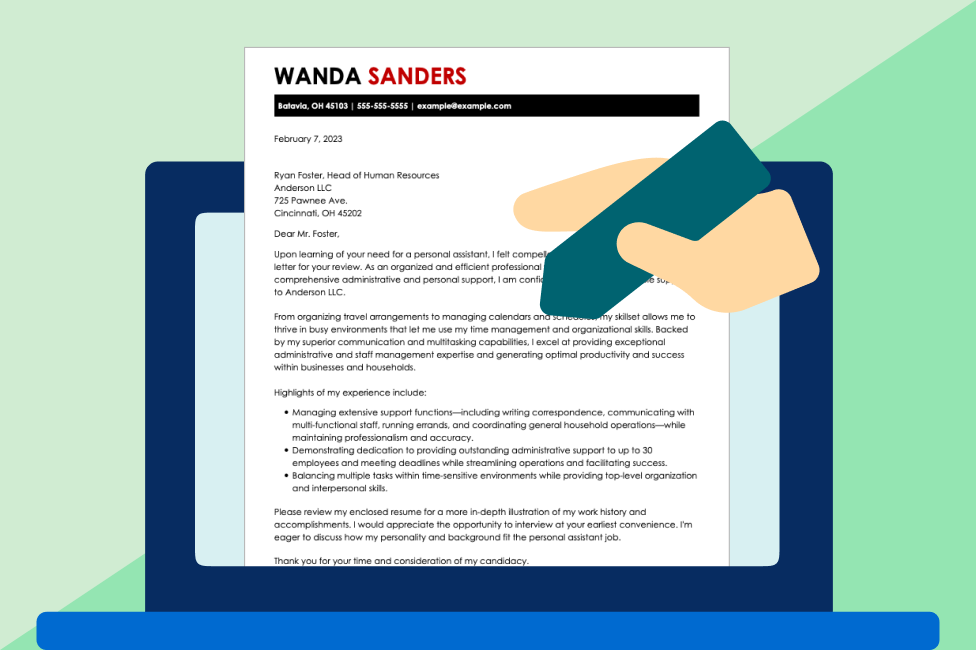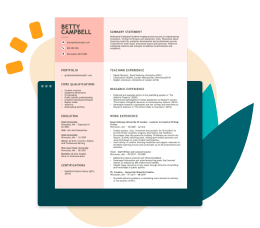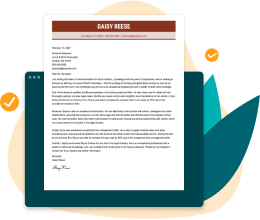How to Address a Cover Letter for 2025 [With Examples]
How to address someone in a cover letter
The way you address someone in a cover letter should be by their full name or professional title.
The phrase “To whom it may concern” is impersonal and shows a lack of interest in finding out the name of your potential hiring manager or recruiter. After all, whoever receives your cover letter will have the first say in whether or not you land the job.
Besides leaving an excellent first impression, spending some time finding the name of your cover letter’s recipient shows indispensable skills like attention to detail and resourcefulness.
When writing a cover letter, you should always try to address it with the hiring manager’s name. However, if you can’t find it, simply addressing it with “Dear Hiring Manager” will suffice.
The best ways to address someone in a cover letter are:
- Dear Andrew Lopez,
- Dear Nancy Wong,
- Dear Hiring Manager,
- Dear Recruiter,
- Dear Prof. Umansky,
- Dear Dr. Nolan,
- Dear Mr. Lunden,
- Dear Ms. Oyelowo,
Remember that being professional is of utmost importance. Never address your cover letter with casual greetings like “Hi,” “Hey,” or “Greetings.”
PRO TIP
Check out our cover letter examples for more ways to address your cover letter. Take advantage of our cover letter samples’ content for inspiration when writing your own!
Using a formal full name salutation to the hiring manager or recruiter is the best way to address a cover letter, but what do you do if you just can’t find a name? You don’t want to look like you didn’t do your homework, and you also don’t want to create a cover letter that sounds too informal.
Follow the methods below for addressing a cover letter when you don’t have the name of the hiring manager. And get help writing the opening, body and closing paragraphs of your cover letter by using our Cover Letter Generator.
How to address a cover letter with a recruiter’s name
When you know the recruiter’s or hiring manager’s name, it’s easier to address a cover letter because all you have to do is type their name. For example:
Using honorific titles when addressing a cover letter
Titles such as Mr. and Ms. are commonly used when addressing a cover letter. However, you should only use these if you know the cover letter’s recipient’s gender.
If you have never met the recruiter or hiring manager, you should never assume their gender by using the Mr. or Ms. titles. You should also avoid the Mrs. title since this denotes marriage status, which you might not know, nor is it relevant in work environments.
Some examples of cover letter greetings are:
- Dear Mr. Bedford,
- Dear Ms. Linda Waterhouse,
- Dear Mr. George Lithgow,
Using professional titles to address a cover letter
Depending on the job you’re applying for, you may send a cover letter to a professor, doctor or military personnel.
In these cases, you must address them with their official titles. Remember that people worked hard to earn the privilege of being addressed as doctors, professors and sergeants, for example. You want to show these potential employers respect.
Check out these examples of how to address a cover letter with a name and professional title:
- Dear Dr. Melba Garza,
- Dear Prof. Dave Compton,
- Dear Hon. Marisol Gutierrez,
- Dear Sergeant Atkinson,
- Dear Lieutenant Jones,
- Dear Reverend Jackson,
In summary, the best way to address your cover letter is by using the recipient’s full name or professional title. Only in cases when you know the person may you use honorifics like “Mr.” or “Ms.” Avoid using “Mrs.” and casual greetings like “Hi,” and check out this guide to learn about common cover letter mistakes to avoid.
How to address a cover letter without a name
If you’re trying to figure out how to address a cover letter to an unknown person, there are a few places to find it.
- Check out the job description for a contact. Sometimes recruiters share their names and contacts in the job ad to receive resumes and cover letters.
- Browse the employer’s website or LinkedIn. You should be able to find the hiring manager’s name or the department director who will review your application.
- Do a good old Google Search. Type in Google: “[Employer/Company Name] hiring manager.” You can also use this method to find the head of departments.
- Contact the employer. Send an email or call the company or employer and request the name of the hiring manager or the department head to whom you should address your cover letter. They’re most likely happy to help you.
For more tips, check out our article, How to Address a Cover Letter Without a Name.
If you’ve tried everything and you can’t find the name of your cover letter’s recipient, here are some acceptable greetings you can use:
- Dear Human Resources Department,
- Dear [Company Name] Team,
- Dear [Company Name] Recruiter,
- Dear Finance Department,
- Dear General Manager,
- Dear Sales Vice President,
- Dear Head of Business Development,
- Dear Dean of Social Sciences,
How to address a cover letter in an email
When sending a cover letter via email, you will either attach a document or write the letter directly onto the body of the email. In either case, the same rules apply when addressing your cover letter’s recipient.
However, you must add a subject line that should include your name and the role you are applying for.
Check out these email cover letter subject lines:
Subject Line: Alyssa Gorman – Executive Assistant Job Application
Subject Line: Romeo Starfas – Senior Accountant at Leeman & Bros.
Subject Line: Chloe Hun – Graphic Designer Job ID: 09374
Afterward, you can begin writing your cover letter with a formal salutation and continue with your opening paragraph.
If attaching your cover letter, include a brief explainer in the body of the email. For instance:
How to format a company’s address on a cover letter
Every cover letter should include a letterhead or header including your name, contact information, date, recipient name, and company address.
The way you should format a company’s address on a cover letter is as follows:
Here’s an example of how to format a company’s address on a cover letter:
Dwayne Johnson, Human Resources Manager
Limitless, LLC
767 Petunia Drive
Provincetown, MA 02657
If you need more help formatting different sections of your cover letter, read our How to Format a Cover Letter blog article.
Easy-to-use cover letter examples
These cover letter examples are completely customizable and format automatically, meaning you only have to input your information, and our Cover Letter Generator takes care of everything else!
Teacher
Software Engineer
Sales Executive
Research Assistant
Registered Nurse
Project Manager
Administrative Assistant
Accountant
Key takeaways
- You should always address a cover letter with the recipient’s full name, if possible. It shows attention to detail and offers a personal touch.
- You should never use informal greetings like “Hi,” “Hey,” “Greetings,” or “To whom it may concern.” These are impersonal and show a lack of effort.
- You may occasionally use honorifics like “Mr.” or “Ms.” but never use “Mrs.” Only use these titles if you already have a personal relationship with the recipient and know their gender.
- Address your cover letter with the recipient’s appropriate professional titles such as “Dr.”, “Prof.”, “Sgt.”, “Rev.” etc.
- If you don’t know the name of the person to whom you’re addressing your cover letter, you should search for them on the company website, LinkedIn or Google.
- If you can’t find the name of the person to whom you should address your cover letter, you can use greetings like “Dear Hiring Manager,” Dear Company ABC Recruiter,” or “Dear Human Resources Staff.”
- When addressing a cover letter via email, include a subject line with your name, desired job title, company name and job ID, if available.
- Your cover letter should also include the company’s address, company name, number and street, city, state and ZIP code. Your cover letter template’s header should also feature your name, date and the recipient’s name.








